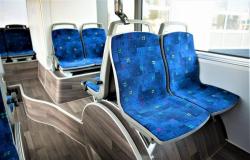“If in 2022 there were about 5,000 producing consumers who bought remote solar power plants in Lithuania, and the total power of their power plants was 39 MW, then already in 2023 we have 20,000 new consumers and 100 MW of total power,” D calculates. Wanted.
According to her, operating solar power parks already generate 9 MW of electricity, and this year it is planned to connect another 25 MW.
“We notice that more and more people understand the benefits of remote solar power plants and decide to purchase them. They are increasingly being chosen by those who already have installed solar power plants, but they need additional power. They often buy the missing quantity from a distant solar park”, says D. Noreikienė.
Andrius Karazinas, the head of the Lithuanian Solar Energy Association, assures that remote solar parks are a very successful Lithuanian model, which colleagues from other EU countries also admire, because not all of them are so well developed. However, he points out that currently solar parks are more attractive to individuals, public institutions and various communities that the Ministry of Energy is trying to promote (“poverty” communities, energy communities).
“All generating consumers could use the net-metering electricity accounting model until January 1 of this year. Starting this year, legal entities can no longer choose such a billing model, only net-billing (net billing model) remains.
So, it doesn’t make much sense for legal entities to purchase part of a solar power plant in a remote park,” the interviewee says about the reduced motivation for businesses to choose electricity produced in solar power plants. It is true that motivation remains for those companies whose priority is to implement sustainability criteria and use less polluting energy.
All you need is an electrical outlet
D. Noreikienė says that practice shows that one of the main customers of solar power parks are residents of apartment buildings.
“It’s a great solution for them because other ways to get electricity from renewable sources are expensive and inconvenient.” In this case, only an electrical input is required. Thus, every resident of an apartment building can have his own remote solar power plant”, assures D. Noreikienė.
According to her, remote solar power parks are being established in Lithuania, where every Lithuanian resident or legal entity can purchase a part of a solar power plant.
“The consumer who has purchased part of the solar park uses electricity in a normal way. The company that oversees the proper operation of the park remains the manager of the solar power park. It assumes the obligations of electricity generation, electricity maintenance during its operation period, which is 25-30 years, depending on the equipment,” explains the solar energy expert, noting that the user can purchase as many kW as he needs.
“From a distant solar plant, it is assigned the necessary power through the ESO system. This is important so that the protection takes place and the assignment of the corresponding power is guaranteed to that particular user,” the interviewer explains.
The amount of power needed to purchase a remote solar farm is calculated using the same principles as installing a solar farm on a house’s roof, she said.
“Usually, people buy a power plant with a power of about 5 kW, if we are talking about apartment dwellers. It is calculated that part of the 1 kW installed capacity of a remote solar power plant is intended for a user who uses 1000 kWh per year. We can be happy that in our solar park 1 kW produces 1075 kWh. This is because the solar plant in the park is placed at an ideal angle to generate the maximum amount of electricity. It is not always possible to install the power plant on the roof at an ideal angle”, says D. Noreikienė.
There could be more buyers of remote power plants
At the moment, a support mechanism is still operating in Lithuania, which encourages the growth of the number of producing consumers, and calls for support are constantly published for the installation of both conventional and remote solar power plants. Both solar power plants and remote solar power plants can be installed or purchased both without and with support.
“It is known that the support motivates the users a lot, after all, it accelerates the payback of the power plant.
For example, 5,243 people, a total of 7.5 million, filled out the applications for the invitation published at the beginning of this year. for the amount of support”, N. Noreikienė shares the figures.
She says that support is provided to residents depending on the power plant purchased.
“For example, if the investment price for the purchase of a 1 kW part of a solar park is 955 EUR, the amount of APVA support is 323 EUR, then you should have 632 EUR of own funds for a part of the solar park with a installed capacity of 1 kW. Therefore, the support amounts to about a third of the price”, says D. Noreikienė.
The interlocutor urges those who are interested, but have not yet had time to purchase a remote solar power plant, to watch for future APVA invitations, as the support accelerates the payback of the power plants. “We calculate that a remote solar power plant purchased without support pays for itself in 7-8 years, and with support – in 4-5 years,” says D. Noreikienė.
A. Karazin says that there could be a much larger number of residents purchasing remote power plants if there were clearer future prospects.
“Today, there is no complete clarity regarding the future of manufacturing consumers. The abolition of net-metering raises a lot of doubts for legal entities and for natural persons, and this somewhat stops them from purchasing such power plants”, notes the head of the Lithuanian Solar Energy Association.
He reminds that the goal of the net-billing model is to encourage the user to use the network intelligently: this means transferring electricity to the network when the price is higher, and taking it when it is lower. “However, in a remote park, the user cannot regulate the supply of electricity to the grid. There are already days and hours in the market when the price of electricity is minus because all producers supply electricity to the grid. And this makes remote parks less attractive,” he laments.
Remote or conventional solar power plant?
D. Noreikienė says to those who are considering which power plant to buy – remote or installed on the roof of the house, that although the payback period for both is similar, individual conditions must also be assessed. “During the construction of power plants in solar parks, the ideal orientation is chosen in the south direction to achieve maximum electricity generation, and the equipment is constantly serviced to ensure uninterrupted operation. When installing a power plant on the roof, its direction may not always be the most optimal. Therefore, although such a power plant currently costs less, calculated per kW, the efficiency of electricity production achieved is lower. That is why, when evaluating the price and production ratio, the profitability results are similar”, says D. Noreikienė.
She names other advantages of a remote solar power plant. According to her, the user who has it does not need to worry about its installation or maintenance.
“There is an annual maintenance fee and the operator of that plant takes care of everything to ensure the generation commitment. In the cold season, the supply is also ensured – the principle is the same as for the provision of other producing consumers. The accounting of the consumed electricity is virtual, carried out at the electricity supplier. As much electricity was stored in the sunny season as it is used in the winter. If the user produces more electricity than it consumes, it travels to the ESO networks for storage,” explains D. Norkienė.
When planning a power plant, it is recommended to carefully evaluate future plans
The interviewer says that currently the most popular to buy from a remote solar power plant is about 5 kW. However, before deciding whether the amount of electricity that the consumer is using now will really be enough, D. Noreikienė advises to carefully assess not only the current situation, but also future plans: such as the purchase of an electric car, possibly replacing the heating system and other solutions that could be implemented in the future significantly increase electricity consumption.
It also provides the details that make up the price of electricity for the owner of a remote power plant.
“In addition to the purchase price, there are taxes to be paid when you become a consumer producer. This is a maintenance fee for the developer for washing the modules, mowing, insurance, and technical service, the price of which is 18 eur/kW in the Solar Park “Čedasai”. Also, the generating user’s fee to the ESO for the accounting of the quantities of electricity produced and supplied to the network and consumed,” explains the interviewer.
She says that there are 3 payment methods that can be found here: https://www.eso.lt/lt/namams/elektra/tarifai-kainos-atsiskaitymas-ir-skolos/gaminanciu-vartotoju-kainos.html. According to the interlocutor, the most economically useful is the plan “Payment for the permitted power generation power of the power plant”.
“Currently, the price of buying electricity from an independent supplier is 20-24 cents per 1 kWh. If we calculate that in the solar park “Čedasai” we will produce 1075 kWh per year (after purchasing 1 kW of power), and we will pay for production service 18 Eur + 49.68 Eur= 67.68 EUR, this means that the price of electricity for 1 kWh will be 67.68 Eur / 1075 kWh = 6.29 cents per kWh, or three times cheaper”, explains D. Noreikienė about the benefits for the consumer.
She also reminds that, for the time being, generating users are not obliged to change their existing plans and can use the generating user’s scheme (net-metering) indefinitely. However, it is possible to choose net-billing by concluding a contract with an independent supplier.
A. Karazinas says that currently those EU countries that changed net-metering to net-billing, such as the Netherlands, are currently returning to the former model. Because practice has shown that net-metering was an essential factor that encouraged consumers to choose electricity produced in solar power plants.






